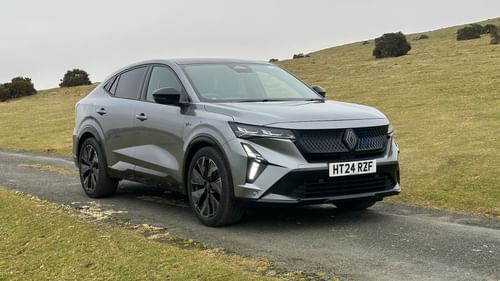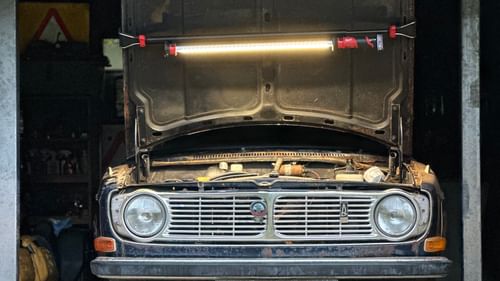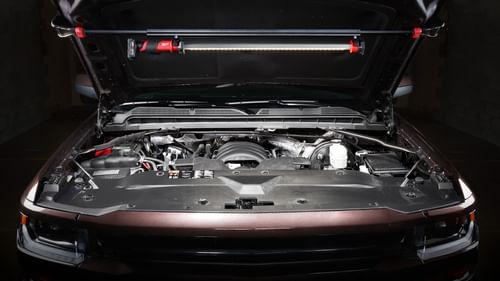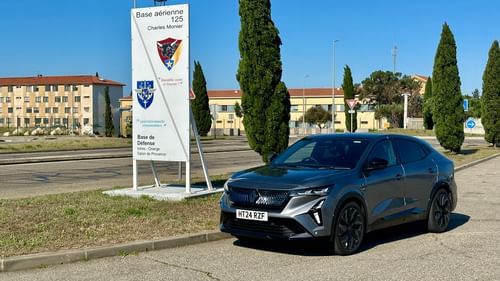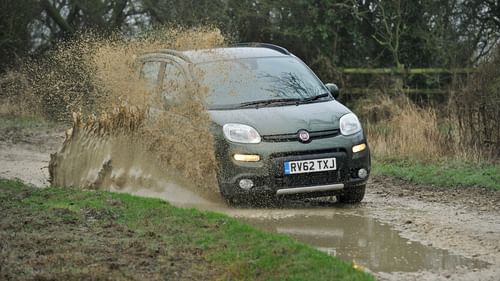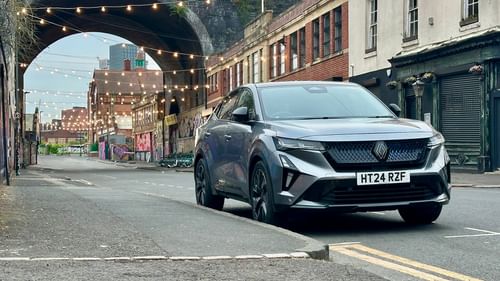PetrolBlog looks at...Mini Coyote V2
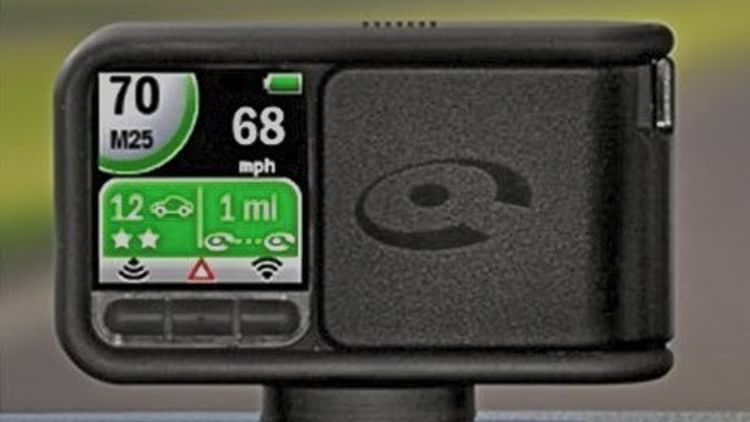
In all my years of driving I've never owned a speed camera alert thingy. I'm also tempted to say that in those same years of driving I haven't picked up a single speeding ticket. But for fear of tempting fate, I won't mention this. Instead I'll say that for the past couple of weeks I've been living with the Mini Coyote V2. No, this is not yet another new variation of the Mini unveiled at the Geneva Motor Show. It is in actual fact a speed camera alert thingy.
I have to admit that I thought stand-alone speed camera altert devices have had their day. These days you're more likely to download an update for your sat nav or buy an app for your smartphone than invest in a unit. But at £185, a price that includes an initial three month subscription to the alert service, is the Mini Coyote V2 a worthy investment?
Introduction
The Mini Coyote is claimed to be Europe's most advanced real-time GPS speed camera alert system, using a constantly updated database of fixed and mobile camera locations. It is targeted at car, van and truck drivers and is either mounted on the dash or the windscreen. It is a neat little gadget, measuring only 90 mm across and weighing just 105 grammes. The discreet magnetic base is virtually invisible from the outside meaning there's no tell-tale sign to attract would-be thieves. The Coyote's screen is clear and the audible alerts are clear and crisp. It is well packaged and is set-up in a matter of minutes. The device comes with a three-months subscription included, but this can be extended via the company's website.

My two-week test of the Coyote could broadly speaking be split into three areas - rural driving, urban commuting and long distance travel. The rural testing was conducted around my home on Dartmoor and with it a mixture of A-roads, B-roads and those which can barely be classed as roads at all. Plymouth presented the best opportunity to test the device in an urban environment, whilst a trip to the Suzuki press launch in East Sussex provided the perfect opportunity to test the car on a long distance route.
Mobile cameras
In truth, the Coyote’s performance was a little mixed. In the 800 miles of testing, I never passed a mobile speed camera so I cannot comment on the device’s effectiveness here. But in theory the Coyote’s approach for mobile cameras is rather good. Upon seeing a roadside camera, a user presses a button on the device which alerts the Coyote database of its presence. When other users pass the site, they will be alerted that a camera may be present. Clever. A kind of social networking, community-driven approach. But there's a catch. As the device relies on other users to tell it where mobile cameras are, you're totally reliant on other drivers buying a Coyote. Fine if you're one of the 650,000 or so users on the continent, not so good if you're one of the first drivers in the UK to buy one.
In the case of the Coyote, being an early adopter may not necessarily be a good thing. The device helpfully tells you how many users, (or Scouts as Coyote calls them), are in the area. It also tells you how far away they are. During my test I only ever saw one other Coyote user and this was as I was heading west on the M3. They were 13 miles away too. Not exactly confidence building stuff. If the Coyote fails to sell, you may have just bought yourself the biggest white elephant since the Betamax. Conversely, if a suitable number of people decide to put a Coyote in their car, then the live updates feature could become quite a useful feature.
Urban areas / fixed cameras
The Coyote’s performance in the city centre was also far from impressive. My morning commute into the office sees me pass five cameras on the way in and four on the way home. On some occasions I would be a given a warning that a camera was sited some 700 yards further up the road. This is fine. But when the Coyote only gives a warning of 10 yards for a camera the other side of a hill, the device is at best, poor. At worst, I would also argue that this is verging on dangerous as I can see cases of drivers braking suddenly to avoid the camera. OK, so they shouldn’t have been speeding in the first place, but if nobody exceeded the limit then we wouldn’t need alert devices would we? In fairness to Coyote though, when I mentioned the problem on twitter, they were quick to respond and told me they’d be looking into it. Credit to Coyote and a good example of a company using social media to interact with its customers. But they need to sort it out, I lost count of the number of times I passed the camera before the lady's voice had finished to give the warning.
The Coyote would also seem to get confused at junctions with a staggered layout, often alerting to me to a traffic light camera the other side of the road. Better to be safe than sorry I guess, but not exactly perfect. It would also warn me about a school zone that appeared to be on a flyover high above the A38! If children are at play here, then there’s something wrong with the local playgrounds!

Rural areas
On the rural roads I found it more useful as a calibration tool to check the accuracy of my speedometer. I’m pleased to say that after 170,000 miles my old Audi is accurate to the nearest 2 mph! Rather like me before I've had my first injection of caffeine in the morning, the Coyote would seem to take a while to get started. I could often get as far as ten miles before the Coyote found a GPS signal. Granted this is not necessarily a problem with the Coyote, but I still think it is worth pointing out. It is also worth noting that it would often display the wrong speed limit on rural roads, with 60 limits given as 40. Fine to err on the side of caution, but the fact is, the information is wrong.
So, not exactly a glowing reference for the Coyote?
SPECS camera zones
Fortunately there is one saving grace for the Coyote. The device offers a unique service in the SPECS average speed camera zones and is really rather clever. Rather than simply tell you that you're entering a SPECS zone, the Coyote will actually guide you through to the end by monitoring your speed. Head into the zone too quickly and the Coyote will help you decrease your speed until you're within the permissible limit. On the M25 and M3, the Coyote performed faultlessly, so if you're driving involves a lot of motorway work, the Coyote could be for you. However, if you have a good understanding of road signs and a car fitted with cruise control, you could simply save your money for other things.

Battery life
The company claims that the Coyote will run on batteries for up to four hours when fully charged. I tested this on the way back from East Sussex and managed three and a half hours before the device switched off. It was still displaying 50% battery life when it closed down, so you might need to have the USB charger available at all times! Fortunately I was only 15 minutes from home on roads I knew, but you might just be reaching your destination on unfamiliar roads.
Verdict
Has the Coyote done enough to convince me that I need a speed camera alert thingy in my life?
No, not at all. I just haven't got enough confidence in the system to invest £185 of my cash, plus a further £89 annual subscription. You're far better off reading the road ahead of you, staying alert and staying within the limits.
But if you desperately want a speed camera alert device and are prepared to be patient, then the Coyote could be for you. With a large number of 'Scouts' keeping a watchful eye out for mobile speed traps, having a Coyote could be the difference between three points and a clean licence. Just don't expect results in the short term.
For more information visit www.coyotesystems.co.uk.
